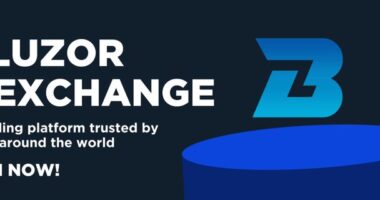In the high-stakes world of semiconductor manufacturing, investor sentiment can shift rapidly in response to political pressures, executive shakeups, and market volatility. One of the most prominent players in this space, Intel Corporation (NASDAQ: INTC), recently faced a sharp sell-off, leaving stakeholders questioning the road ahead.
With the company navigating leadership changes, geopolitical scrutiny, and fierce industry competition, its stock plummeted by 8.7% in a single day, significantly underperforming even in a broadly negative market climate.
To fully understand the gravity and implications of this downturn, Friya Carmani, a senior financial strategist from QuilCapital, explores the internal and external pressures reshaping Intel’s current market standing and its uncertain path forward.
image from finance.yahoo.com
Geopolitical Concerns Stir Market Anxiety
At the heart of Intel’s current troubles lies a growing geopolitical rift between the U.S. and China, with semiconductors caught in the middle. Investors were particularly rattled by a recent Reuters report exposing the extensive business ties of Intel’s newly appointed CEO to Chinese tech firms, some of which are reportedly connected to China’s military infrastructure. These revelations arrive at a critical time when national security concerns have intensified scrutiny over semiconductor supply chains.
The new CEO–a seasoned executive and venture capitalist–has built an expansive portfolio over the past few decades through ventures like Walden International, as well as Hong Kong-based firms Sakarya Limited and Seine Limited. Although some of these investments have since been divested, Walden International remains associated with at least 20 funds and companies linked to Chinese state-owned entities, according to the investigation.
Given the backdrop of ongoing U.S. sanctions against firms such as Semiconductor Manufacturing International Corp. (SMIC), Intel’s proximity to these ties is fueling investor unease.
The appointment, while strategically intended to help drive Intel’s innovation roadmap, now raises significant questions about potential conflicts of interest, particularly as the semiconductor industry is increasingly viewed as a strategic asset in global competition.
image from tradingnews.com
Market-Wide Declines Compound the Fallout
Intel’s individual woes are unfolding in tandem with broader market turbulence. On the same day, Intel’s stock plunged, and both the S&P 500 and Nasdaq Composite fell by over 5%, reflecting a widespread retreat from technology stocks. This pullback was likely triggered by a mix of profit-taking, fears over inflationary pressures, and concerns about tightening monetary policies.
However, Intel’s 8.7% decline outpaced the broader market, underlining the market’s heightened sensitivity to company-specific risks. The semiconductor sector, once the darling of tech investors due to its ties to AI, automotive, and cloud computing growth, is now under intensified scrutiny as global tensions escalate and technological decoupling gains momentum.
Leadership Transitions Amid Strategic Uncertainty
The news of Dr. Lavizzo-Mourey’s retirement from Intel’s Board of Directors further adds to the atmosphere of transition. While board reshuffles are not uncommon, leadership changes during turbulent times often create added uncertainty among stakeholders, particularly when accompanied by controversial executive appointments.
At the same time, Intel is attempting to reinvent itself with new product launches, such as the much-anticipated Xeon 6 processor line, aimed at reclaiming competitive ground in server and data center markets. These developments signal an aggressive effort to revive growth and pivot toward high-performance computing applications. Despite these strategic moves, the company continues to battle a lag in profitability and investor confidence.
Mixed Signals from Market Performance and Shareholder Returns
Despite a brief 8% uptick in share price earlier this quarter, Intel’s long-term performance has been underwhelming. Over the past year, its total shareholder return has dropped by 41.52%, starkly contrasting with the 8.56% positive return in the broader U.S. semiconductor industry. This discrepancy highlights the growing divergence between Intel and more agile competitors capitalizing on emerging technologies like AI and edge computing.
Currently, Intel trades at a 6% discount to its consensus price target of $22.90, reflecting lingering skepticism among market participants. While short-term sentiment remains bearish, analysts recognize that Intel’s AI-powered initiatives and eventual realization of its product roadmap could potentially restore momentum–if the company can execute without further missteps.
Conclusion: Uncertainty Demands Vigilance
Intel’s current struggles serve as a case study in the complexities of modern tech investing. The combination of geopolitical entanglements, leadership volatility, and competitive pressures creates a fragile environment for any potential turnaround. While recent product developments and strategic realignments offer hope, market confidence remains shaky, and execution risks loom large.
For investors and industry observers alike, Intel’s trajectory will depend on how effectively it can distance itself from politically sensitive associations, deliver on innovation promises, and reclaim lost market ground. As the semiconductor sector continues to evolve at breakneck speed, Intel’s ability to pivot could determine whether it regains its status as a tech titan–or becomes a cautionary tale in corporate transformation.
COMTEX_465114331/2922/2025-05-01T12:48:52
This press release was originally published on this site







